minimum stair tread depth nz
300 13 3900 mm Each tread will also have a 20 mm. Winder treads shall have a minimum tread depth of 11 inches 279 mm between the vertical planes of the foremost projection of adjacent treads at the intersections with the walkline and a minimum tread depth of 10 inches 254 mm within the clear width of the stair.

External Stairs For Houses Branz Build
In New Zealand the maximum number of risers between landings is 17 but 14 is recommended.

. In wet weather tyre tread grooves help to remove water from the contact patch between your tyres and the road surface meaning your car can brake. All risers and treads must be equal on each flight of stairs. Virtually all tyres have moulded tread-depth indicators.
There are only minimum stair tread depth requirements. The edge of treads should be visible against the background. 5 rows Riser height and tread depth should be of a uniform height within a tolerance of 5mm in one.
Stair tread depths shall be 11 inches 279 mm minimum. I came across a Carson Dunlop photo and it states 9 to 9 14 inches. The likelihood of an overstep decreases significantly with increasing tread depth.
Multiply the tread depth by the number of treads to calculate the overall length of the stair. Per code 2006 IRC R311532 the minimum tread depth shall be 9 inches. Slip resistant nosings can be added to meet these standards.
For further universal design guides checklists visit wwwaucklanddesignmanualconz. In Australia the maximum is 18. However a small number of tyres such as some retreaded or vintage tyres may not have moulded tread-depth indicators.
The tread depth shall be measured horizontally between the vertical planes of the foremost projection of adjacent treads and at a right angle to the treads leading edge. I am looking for information on the minimum stairway tread depth. The minimum legal depth is 15mm but the more tread you have the better the grip and the safer youll be.
41 Pitch risers and treads 27 42 Width 30 43 Landings 31 44 Curved and spiral stairways 33 45 Stair winders 33 46 Visibility of stair treads 33 50 Fixed Ladders 34 51 General 34 52 Step-type ladders 37 53 Rung-type ladders 38 54 Individual rung-type ladders 39 60 Handrails 39 Page 70 Doors and openings 43. According to NACHI 10 inches is recommended. LEGAL MINIMUM TREAD DEPTH.
The legal minimum tread depth for cars in the UK is 16mm throughout a continuous band comprising the central three-quarters of breadth of the tread and around its entire outer circumference. Staircases must slope at an angle of 20 to 45 but between 30 and 38 is recommended. For these the NZTA has retained the old requirement of at least 15mm tread depth across ¾ of the tread width and around the whole circumference of the tyre.
I am not necessarily interested in what code says but stating a safe tread depth to navigate the stairwell safely. The faster you go the less effective your tyres will be if the tread depth isnt up to scratch. Building regulations relate to the height depth and pitch of the stairs.
What is code for rise and run of. If no then the treads must be 11 deep. Minimum headroom is generally 2 metres.
To avoid having to install nosing the code requires the depth of the tread to be no less than 11 inches. Staircase Tread Run Depth. Variations between tread depths and riser heights must be no more than 0375 inches.
Of adjacent treads and at a right angle to the treads nosing. Now the equation looks like this 75 x 15 x 192 216 meaning that this deck requires a minimum of 216 bracing units. In order to work out the area just multiply the length by the depth ie.
BRANZ Guideline February 2012 stair widths. Exactly Where How to Measure Stair Tread Depth. A stair tread should be a minimum of 11 deep for stairs used as a means of egress under the 2018 IBC building code.
The image below shows how much a tyre touches a wet road at different speeds. A stair tread should be a minimum 95 deep for stairs used as equipment access under the OSHA standards for stairways. Stair treads need to be slip resistant and extend across the full width of the stairway.
How deep should a stair tread be. When designing stairs factors to consider are the design parameters given in D1AS1. Adequate tread depth is essential for stairway safety.
As for stair treads the depth should not be less than 10 inches however this will require nosing projections. Analysis of stairway related accidents shows that overstepping of treads is a common cause of accidents. Step Going Length Bottom.
In the UK in a domestic setting the length of a flight can go up to 36 risers. Stair treads need to be slip resistant and extend across the full width of the stairway. Minimum headroom is generally 2 metres.
Building Code compliance document D1AS1 does not specify a width for common or main private stairways the most common stairway applicable within residential buildings but recommends no less than 850 mm. Also there can be no variance of 38 between the treads within a flight of stairs. Co-locate stairways with a step free route to provide users with a convenient step free alternative.
The greatest tread depth within any flight of stairs shall not exceed the smallest by more than 38 inch 95 mm. The minimum permitted tread depth is 280 mm but with ample space for the stairs 300 mm treads have been selected. Nosing that is beveled should not exceed ½ inch or the radius of curvature not more than 916 inch.
The city defines minimum tread depths at nine inches with the nosing the exposed part of the tread measuring between 075 inches and 125 inches. 4 x 48 192 metres square. This distance must be at least 10 inches.
The minimum tread depth shall be 10 inches 254 mm. The stair tread depth shall be measured horizontally between the vertical planes of the foremost projection of adjacent treads and at right angle to the treads leading edge. Steps should be between 310-450mm deep and 150- 180mm high Step dimensions and profiles should be consistent across all steps All steps.
10 to 11 Inches Minimum The tread depth is the distance from the front edge or nosing a tread projection that overhangs the riser below of one step to the front edge or nose of the next step measured horizontally. Minimum riser height is eight inches. Stairs are not designed by building codes they are merely restricted by those codes.
There is always one more riser than treads so for 14 risers there will be 13 treads.
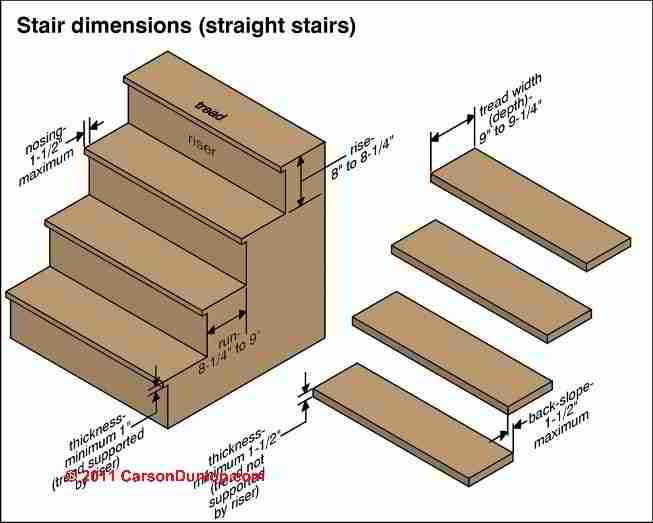
Stairway Tread Width Tread Nose Details For Stair Construction Inspection
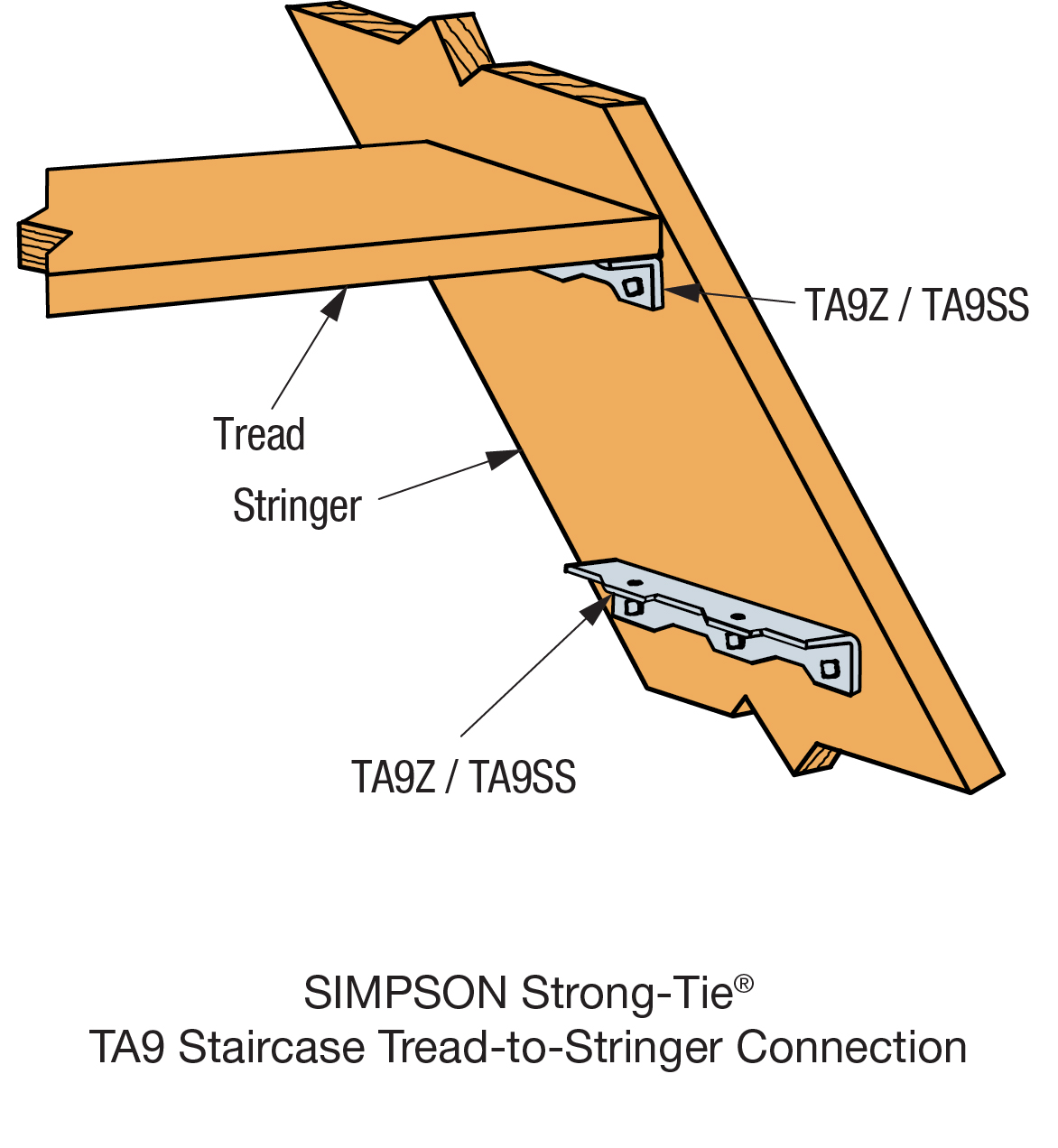
Ta Staircase Angle Strong Tie Together We Re Helping Build Safer Stronger Structures
Osha Stair Requirements To Keep Your Workplace Safe And Productive
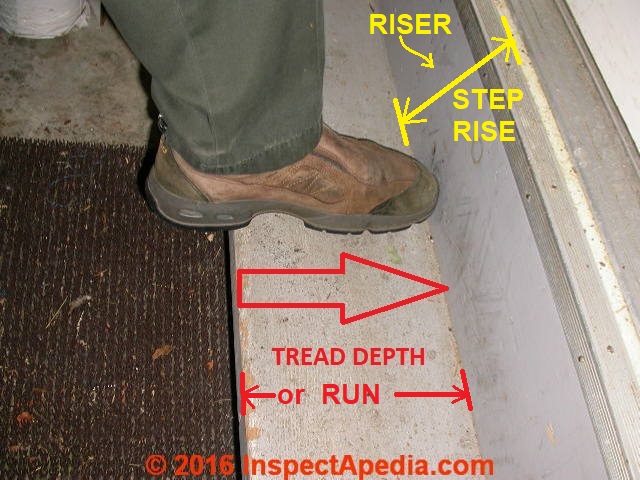
Stairway Tread Width Tread Nose Details For Stair Construction Inspection
Stair Stringers Calculation And Layout Jlc Online

What Is The Best Rise And Run For Stairs Stylecraft Stairways
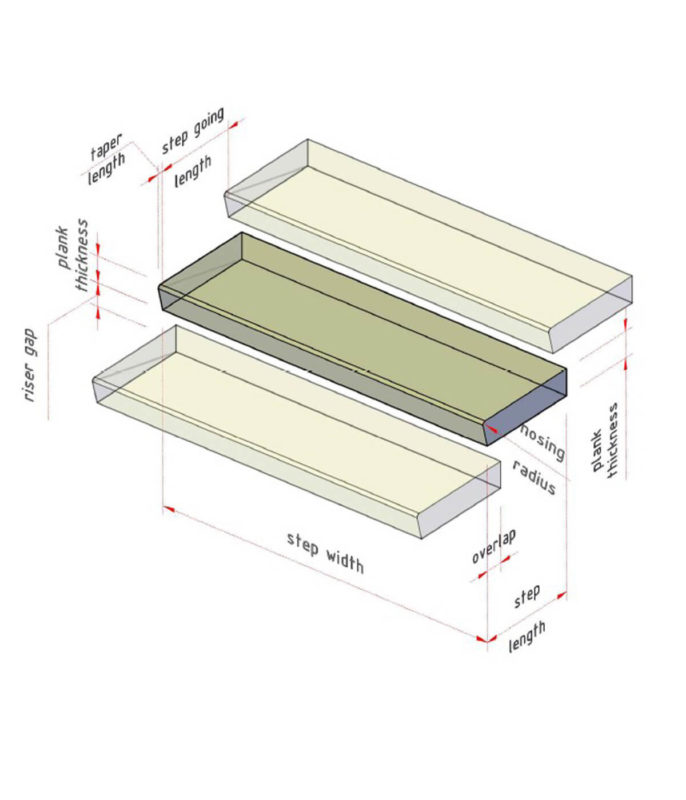
Tread Styles Concrete Stair Treads Monarc

External Stairs For Houses Branz Build
Osha Stair Requirements To Keep Your Workplace Safe And Productive

External Stairs For Houses Branz Build

External Stairs For Houses Branz Build
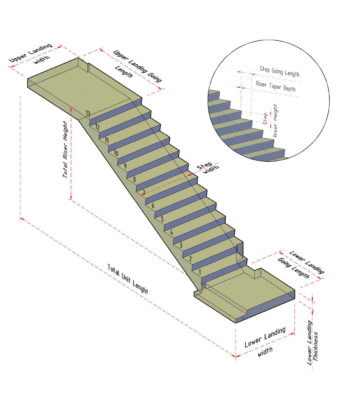
Stair Flights Concrete Stairs Nauhria
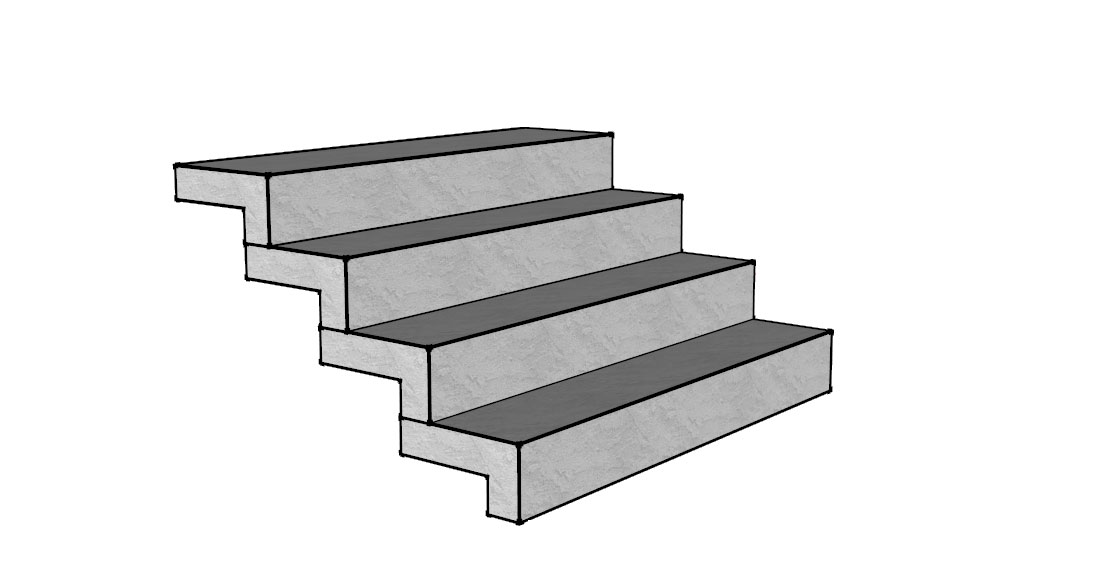
Tread Styles Concrete Stair Treads Monarc

Stair Dimension Stair Dimensions Stairs Treads And Risers Stair Layout
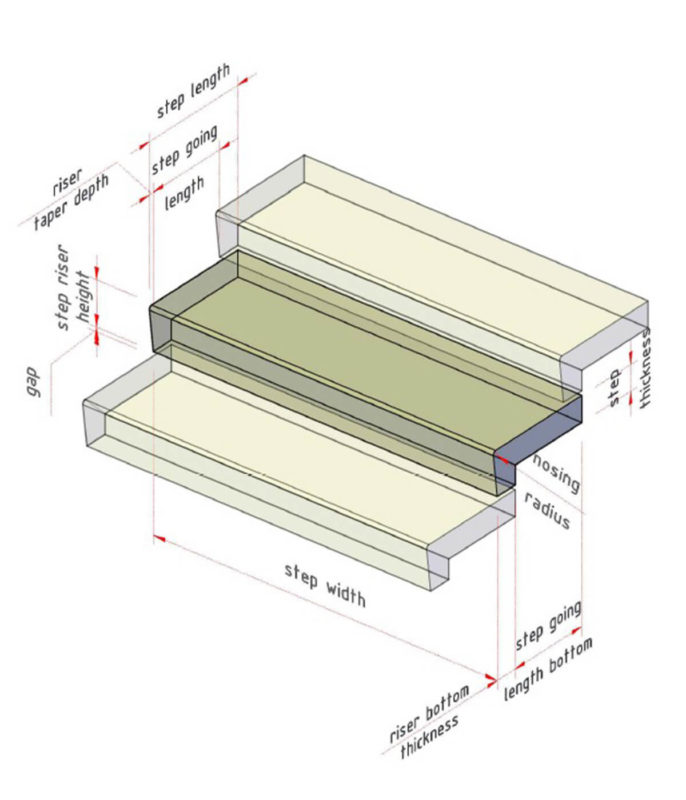
Tread Styles Concrete Stair Treads Monarc
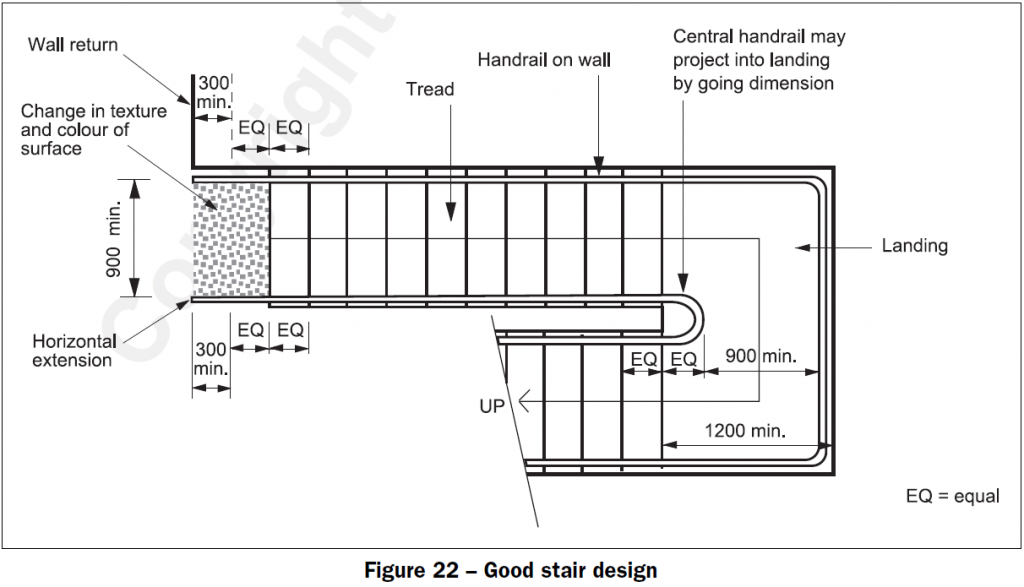
Stairway Encroachment Into Corridors Moddex

External Stairs For Houses Branz Build
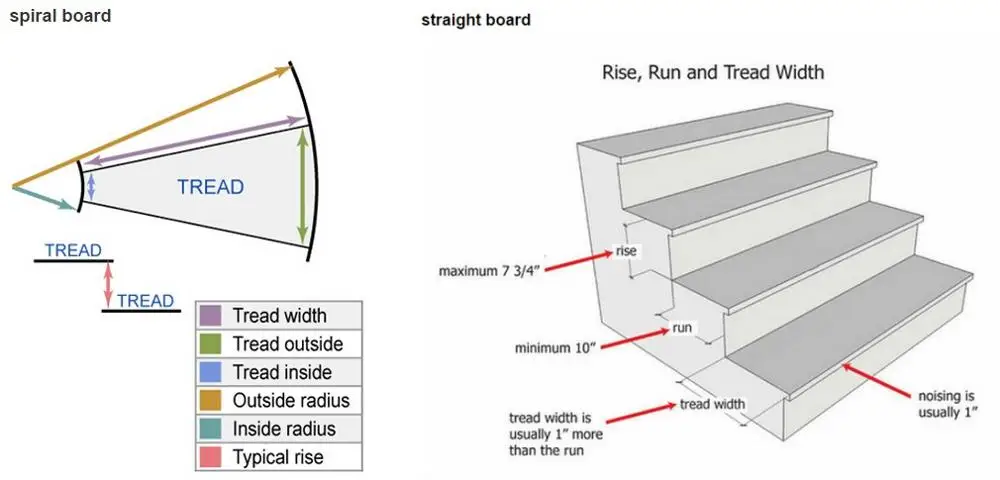
50 100mm Thick Floating Wood Stair Tread Buy Floating Stair Tread Floating Wood Stair Tread Floating Wood Tread Product On Alibaba Com
